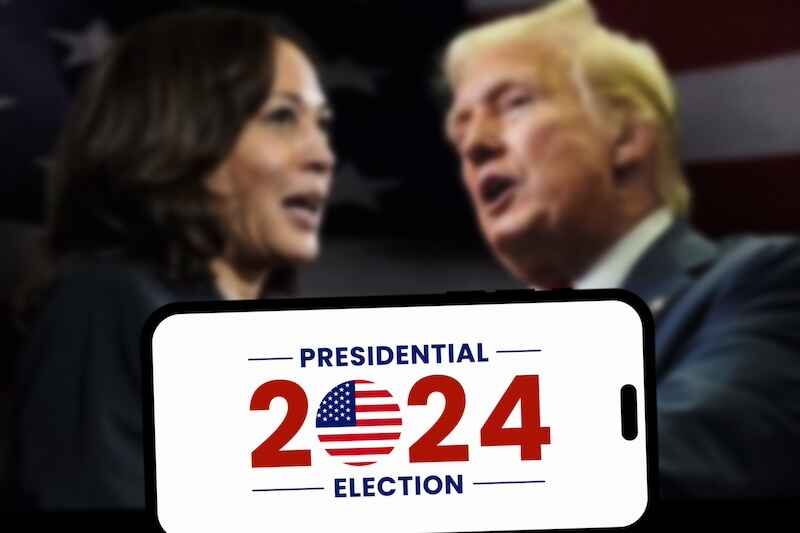Is This Misunderstood Metric the Fed’s North Star?
Shah Gilani|June 14, 2024

In the dark universe of central bank manipulation – where decisions are seemingly made with a wink – there exists a pivotal yet elusive concept…
“R-star,” or the real neutral rate of interest.
A lot of people believe this abstract measure holds significant sway over the actions of central banks, particularly the Federal Reserve. It serves as a beacon that guides policy decisions toward what the Fed wants us to believe is economic equilibrium.
Since this was another big week for the Fed, and with R-star increasingly being pointed to as an important measure that drives policy decisions, I think we should take a look at what this figure really represents.
Along the way, we’ll shine a light on the Fed’s true North Star.
The Goldilocks Rate
At its core, R-star represents the real interest rate that neither stimulates nor constrains economic activity when the economy is operating at full employment.
In essence, it’s the “Goldilocks” interest rate. Not too hot, not too cold… just right.
Understanding and estimating R-star is crucial for crafting effective monetary policy. Setting interest rates below R-star spurs growth and leads to boom-bust cycles. Setting rates above R-star can cool an overheating economy or tamp down inflation.
At least that’s the theory.
In a free market, R-star wouldn’t be a central bank target. It would be the naturally occurring equilibrium rate… the result of supply and demand dynamics driving savings and capital allocation.
But that’s not the reality. In practice, R-star is nothing more than a “narrative tool” the Fed uses to explain its policy prescriptions.
The trick – as in central banker prestidigitation – is to point to R-star with one hand while manipulating rates with the other.
That’s No Moon…
Unless you’re a monetary policy wonk or economist, R-star probably hasn’t been on your radar since the Great Financial Crisis of 2008.
Initially, in the aftermath of the crisis, the Fed pointed to R-star having plummeted. In its view, this reflected a myriad of factors including anemic to non-existent economic growth, demographic shifts, and subdued productivity. The decline supposedly posed a conundrum for central bankers as traditional tools like lowering interest rates struggled to boost economic growth and inflation.
So, the Fed invented QE (quantitative easing). It loaded up its fake balance sheet (the Fed has no capital to support a balance sheet) with Treasury bills, notes, bonds, agency mortgage-backed securities, and even a smattering of junk ETFs. It was all supposedly meant to get R-star low enough to stimulate growth and head off deflation.
The Fed wasn’t really trying to manage R-star, though. It was trying to save the Death Star – that is, America’s banking system – from imploding.
And once they put a stop to that implosion, they ramped up QE to flush up their constituents – the biggest banks in America – with profits so they’d all shine again.
And boy did that ever work.
Why R-Star is Back
If R-star really was just a reflection of where free markets drove interest rates, it would have remained low long enough to establish a floor under prices that were sliding in the wake of the Great Financial Crisis. And, eventually, it would have risen organically as supply and demand dynamics balanced themselves out.
The economy would have recovered… though big banks would have suffered for years.
That’s how we know R-star isn’t a reflection of economic conditions. It’s merely a tool, like a fulcrum, that the Fed uses to support its interest rate manipulation policies.
And here we are again…
In the midst of another economic crisis – this time an inflationary one – the narrative surrounding R-star has reemerged.
Central bankers and government mouthpieces, including the likes of Janet Yellen and Mario Draghi, are suggesting that R-star might be on the rise. Their hypothesis is supported by indicators such as increased investment activity and diminishing consumer deleveraging.
They aren’t considering that a rising R-star could also be a reflection of free market conditions. After all, that isn’t in central bankers or government partisans’ interest.
But as we’ve covered, R-star left alone would likely continue rising.
And that would be bad for banks who continue to hold trillions of dollars of underwater Treasury securities and low interest loans.
It would be equally bad for incumbent governments who are responsible for debt issuance to refinance maturing obligation and pay for new voter gummies (at ever higher costs, of course).
For example, year-to-date, outlays for just interest on the Treasury’s public debt hit $728 billion. That’s up a whopping 37% in a year.
So now the “R-star needs to be lower” narrative is what we’re hearing from the Fed and Treasury.
The Fed’s TRUE North Star
The recent uptick in discussion around R-star has led to speculation about downward rate adjustments, even in the face of persistent inflation. The Federal Reserve is poised to start cutting rates later this year because they say rates are too restrictive now.
Really? No, they’re not too restrictive. They’re where they should be!
How do we know they are where they should be? Because inflation is lower, the labor market is strong, wages are rising, and we’re enjoying economic growth. There’s also plenty of capital being made available to sound borrowers.
But the Fed’s manipulative manifesto, its true North Star, is lowering rates.
There’s no better way for it to enrich its big bank constituents. So, it will bastardize the free market-derived, properly balanced R-star.
It will continue its monetary manipulation, driving us down to where the next boom cycle can begin… all to fatten up big bankers’ and Wall Streeters’ pockets.
And in the meantime, me and my Manward Money Report subscribers will keep playing the action – with our leveraged position on the iShares 20+ Year Treasury Bond ETF (TLT).
I have no doubt we will profit handsomely as R-star rhetoric is used to manipulate rates lower.

Shah Gilani
Shah Gilani is the Chief Investment Strategist of Manward Press. Shah is a sought-after market commentator… a former hedge fund manager… and a veteran of the Chicago Board of Options Exchange. He ran the futures and options division at the largest retail bank in Britain… and called the implosion of U.S. financial markets (AND the mega bull run that followed). Now at the helm of Manward, Shah is focused tightly on one goal: To do his part to make subscribers wealthier, happier and more free.




